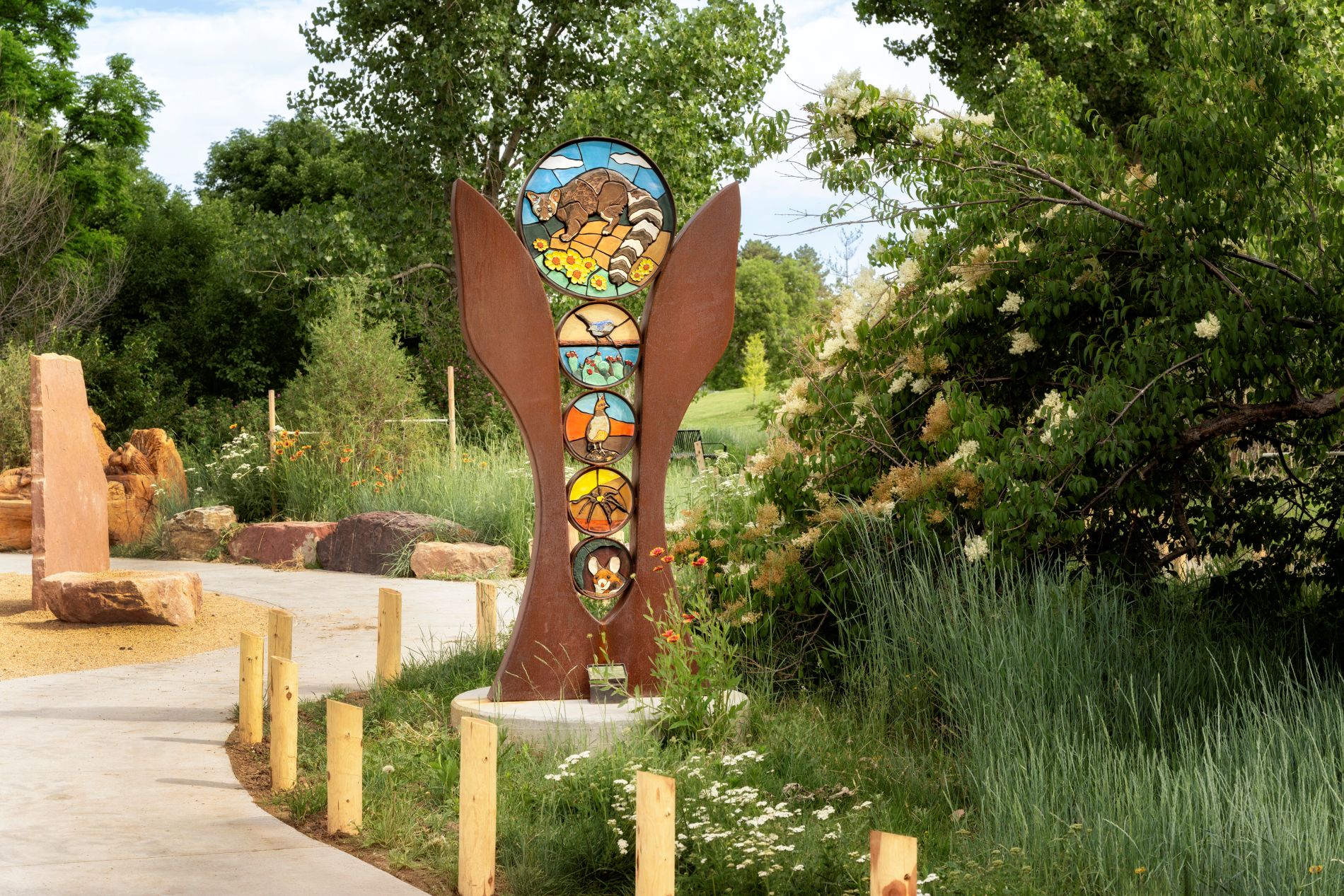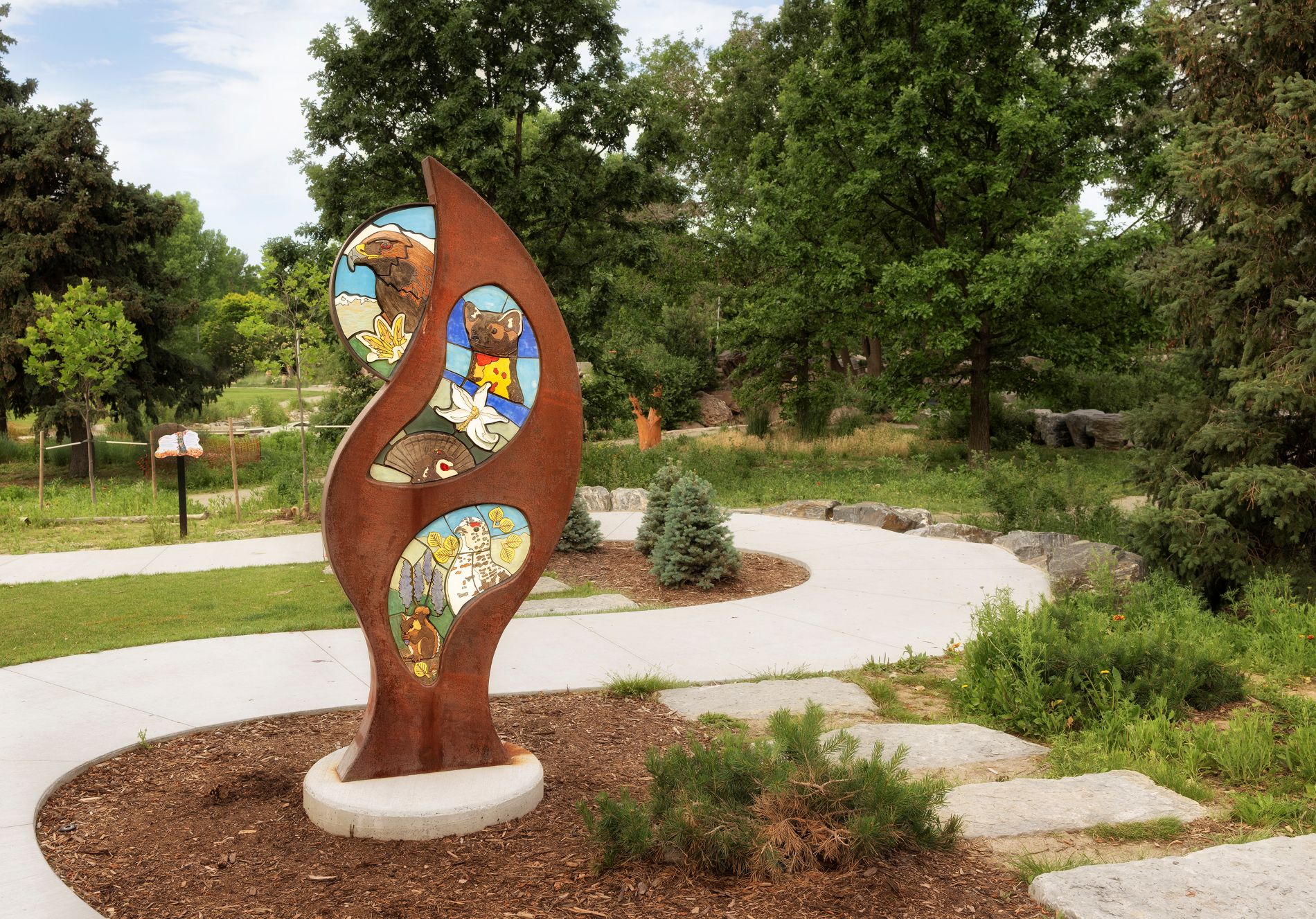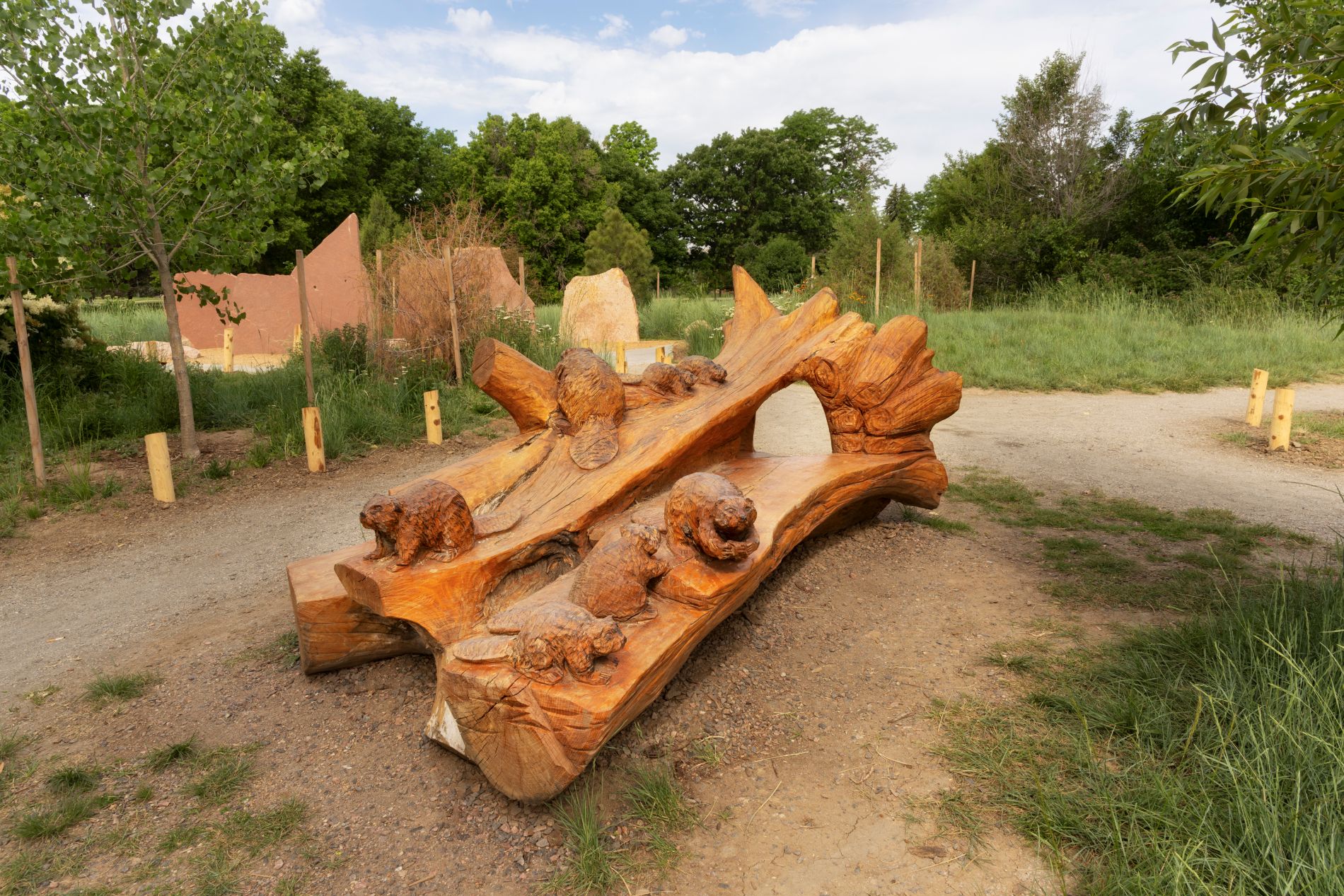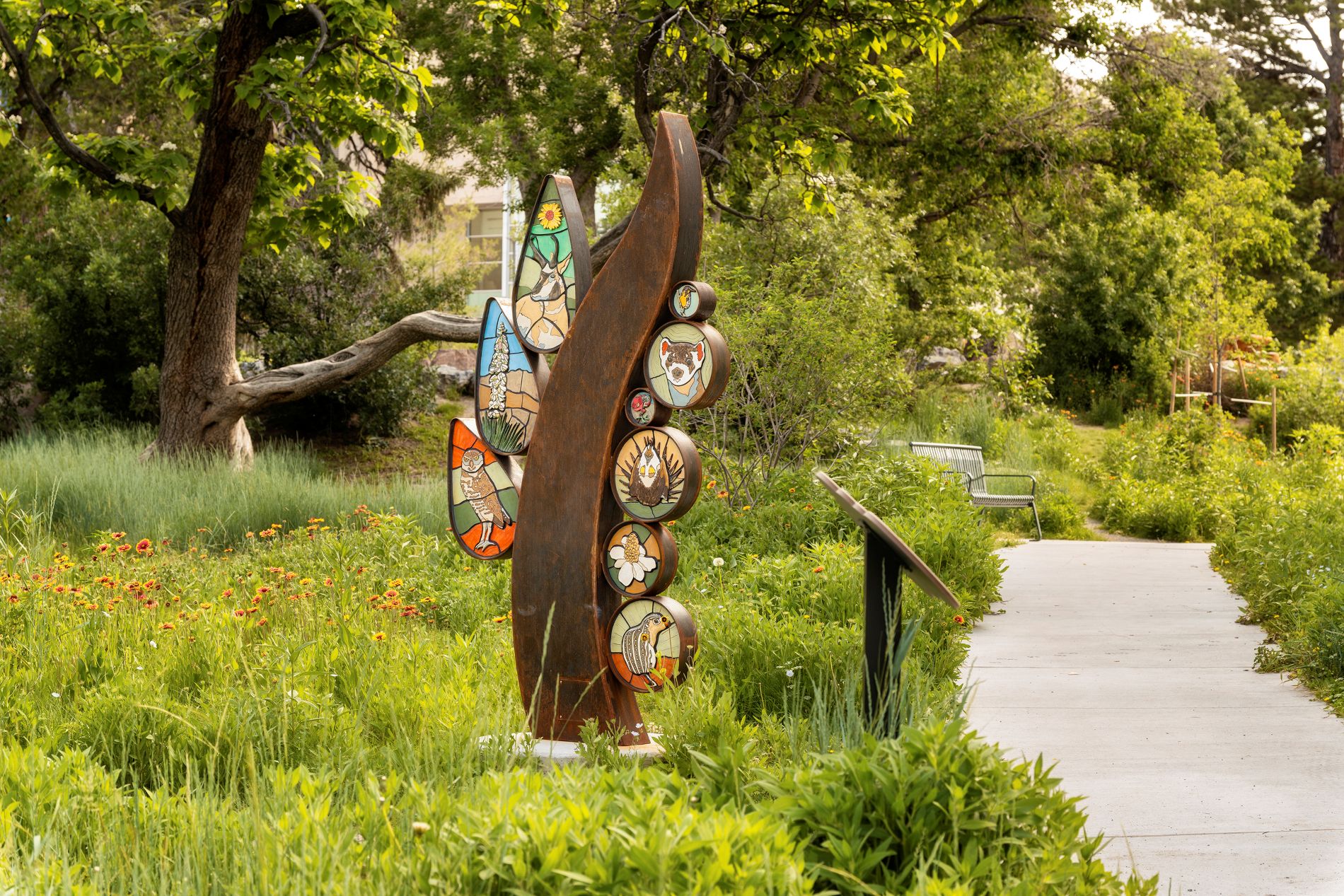CATALYST
DENVER MUSEUM OF NATURE & SCIENCE ONLINE MAGAZINE
The Story Behind Nature Play’s Public Art Installations
Meet the Artists Helping to Shape a Unique Creative Play Experience in City Park

Public art with species from piñon-juniper woodland ecosystem by artist Greg Fields in Nature Play. (Photo/ Rick Wicker)
As you walked past the beaver dam but before you arrive at the swing set, a bearded fellow with a pointy green cap peeks out at you from behind a prickly pear cactus. He’s tiny, so you’re unlikely to see him — but if you do, you’ve just spotted one of two hidden elves outside the Museum having fun in Nature Play’s public art installations.
The elf is tucked away in a sculpture made by artist Gregory Fields. The hope is that when a child or adult encounters the elf, they will enjoy a special kind of creativity and playfulness that only art and nature can inspire. Fields is an Erie-based artist who was commissioned under the city’s 1% for Public Art program — a long-running municipal initiative that allocates a percentage of city-funded capital construction budgets to public art.
Fields describes the Nature Play project as a professional and personal milestone: “When I saw the call for artists, I thought, ‘Oh my goodness, this is the project I’ve been waiting for,’” Fields said. “Then when I received the news that I was selected, my jaw about hit the floor... it was so exciting!”
Working in collaboration with staff from Denver Arts & Venues and the Museum, Fields developed four sculptures, each one representing a distinct Colorado habitat: alpine, piñon-juniper woodland, grassland and aquatic. The glazed ceramic artworks are populated with 66 native species found in ecosystems across Colorado and the Museum’s iconic “Explore Colorado” dioramas on the third-floor Wildlife Halls. Additionally, the Museum commissioned Fields to create a separate piece to recognize the many donors who made the creation of Nature Play possible.
“I loved researching the species and working with scientists and educators to get it right,” Fields said. “We have so many different species represented and it was a joy to sculpt them. It’s been such a wonderful project to create.”
The process was labor-intensive and technically demanding. Fields constructed the sculptures from welded steel shapes with spaces to house the ceramic wildlife and ecosystems. To account for shrinkage during firing, Fields calculated that the clay slabs needed to be sculpted 9.1% larger than their intended final size. After drying and firing the clay, putting them together was like fitting together a jigsaw puzzle with each piece fitting just so.

Greg Field's "Alpine" sculpture presents Colorado’s high-country wildlife through glazed ceramic species fitted into a steel structure. (Photo/ Rick Wicker)
Fields’ art installations are designed to be rediscovered every season: “In winter, these sculptures become beacons of color in an otherwise dormant landscape,” he said. “In summer, they blend in more, almost growing into to the natural environment that surrounds them.”
Fields’ work is not the only artist whose creativity enriches Nature Play. Across the four-acre play experience, visitors are treated to intricately carved and fully climbable wooden benches made from reclaimed logs and tree stumps. These are works by Faye Braaten, a longtime artist known professionally as “ChainsawMama.”

This bench shaped like a beaver dam — complete with a tunnel carved through the middle that children can slip through — was made by artist Faye Braaten, also known as “ChainsawMama.” (Photo/ Rick Wicker)
“I love creating pieces that the public can interact with,” Braaten said. “I was given the freedom to create in the theme that [the Museum] wanted."”
Her favorite and most challenging piece, she says, is a bench shaped like a beaver dam — complete with a tunnel carved through the middle. The piece was both the most satisfying and most challenging for Braaten to create because she started with a unique log and had to use a really big saw and manage the powerful kickback when carving it through.
“Public art in these kinds of spaces matters,” said Meg Pursell, public art administrator for the City of Denver. “It creates moments of delight and reflection, and it’s free to enjoy. That’s what makes it powerful.”
For Fields, the impact is as much about the collective experience as it is about the art itself. “Public art has a unique sense of place. Kids will grow up with this,” he said. “It becomes part of their consciousness. That’s a big part of what public art can do.”

The "Grasslands" sculpture by artist Greg Fields celebrates species found in Colorado’s plains ecosystems. (Photo/ Rick Wicker)
Summer 2025
In This Edition
-
Hunting for the Last Cretaceous Ecosystems of Peru
Museum Paleontologists Climb the Andes to Crack the Fossil Code
-
The Story Behind Nature Play’s Public Art Installations
Meet the Artists Helping to Shape a Unique Creative Play Experience in City Park
-
Museum Launches a New Way to Discover our Digital Collections
You Can Now Download Material Directly from Science Collections!
-
What DNA Can Tell Us About Our World
A Behind the Science Conversation with the Scientists in our Genomics Lab
-
Radiant Science! The Museum's Fluorescent Rocks
How the Museum is Assembling a Glow-in-the-Dark Mineral Display
-
Finding Direction in Our Current State of Affairs
The Institute of Science & Policy Provides Tools, Resources for Critical Thinking
-
The Museum Beadwork Collection Travels to Oklahoma
Building a New Model of Collaboration Between Tribal Governments and Cultural Institutions
Share this:
